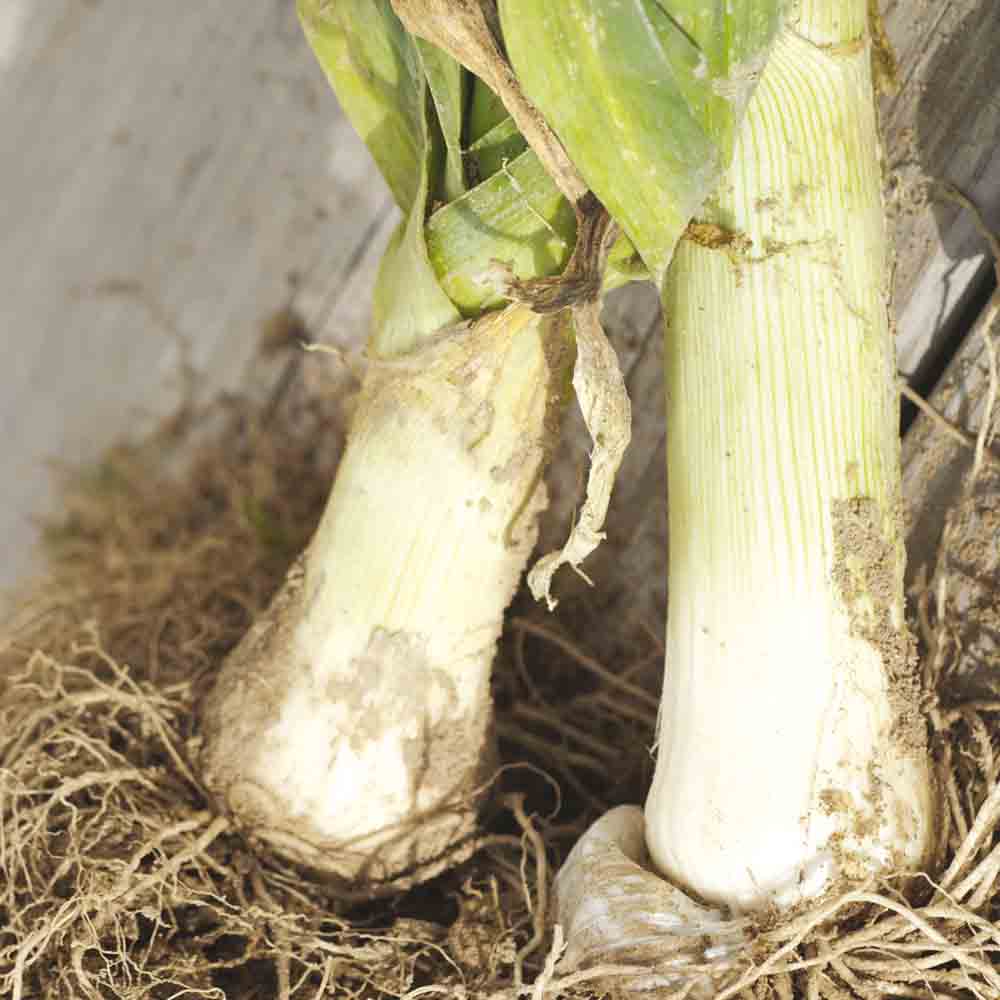CARENTAN LEEK 2 AB
Allium porrum
The Carentan leek is a very hardy variety that tolerates cold well and is slow to set seed in spring. The Carentan leek's stems are very short, between 20 and 25 cm with a diameter of 6 to 8 cm. The leaves are wide and begin to separate above the stem at about 8 cm to form a fan. The leek is known for its many virtues (digestive, antiseptic, etc.), rich in vitamins, copper, iron, phosphorus. It is an essential autumn and winter vegetable. It can be eaten cooked, in vinaigrette, au gratin, in pies, in soups and stews.
Successful Sowing of Carentan Leeks
Sowing under cover: From February to April.
Sowing in open ground: From March to May.
In March, loosen the soil with a broadfork and sow in a seedbed in 1 cm deep furrows, spaced at least 5 cm apart. Place 1 seed every centimeter. Cover with potting soil, firm down, and water. Keep the soil moist for 3 weeks until the leeks emerge. In May/June, transplant the seedlings into place once they reach the diameter of a pencil.
Planting Leeks
Prune the roots and leaves, leaving only a third of the length. This will encourage the production of new roots and limit water evaporation from the leaves. Soak the roots in a mixture of water and soil. Transplant the young leeks in May/June into fresh, rich, well-fertilized soil 15 cm apart, in rows 35 cm apart, digging them in 10-15 cm. Then earth them up after a few weeks of growth. Water frequently with a light spray to prevent pests. Mulching is recommended.
Good Associations
It is customary to grow leeks between rows of carrots. These two plants get along wonderfully: the smell of leeks repels carrot flies, while the presence of carrots repels leek moths.
The Enemies
Leek moth or leaf miner: use an insect repellent as a preventative measure, or pheromones against leek worms.









